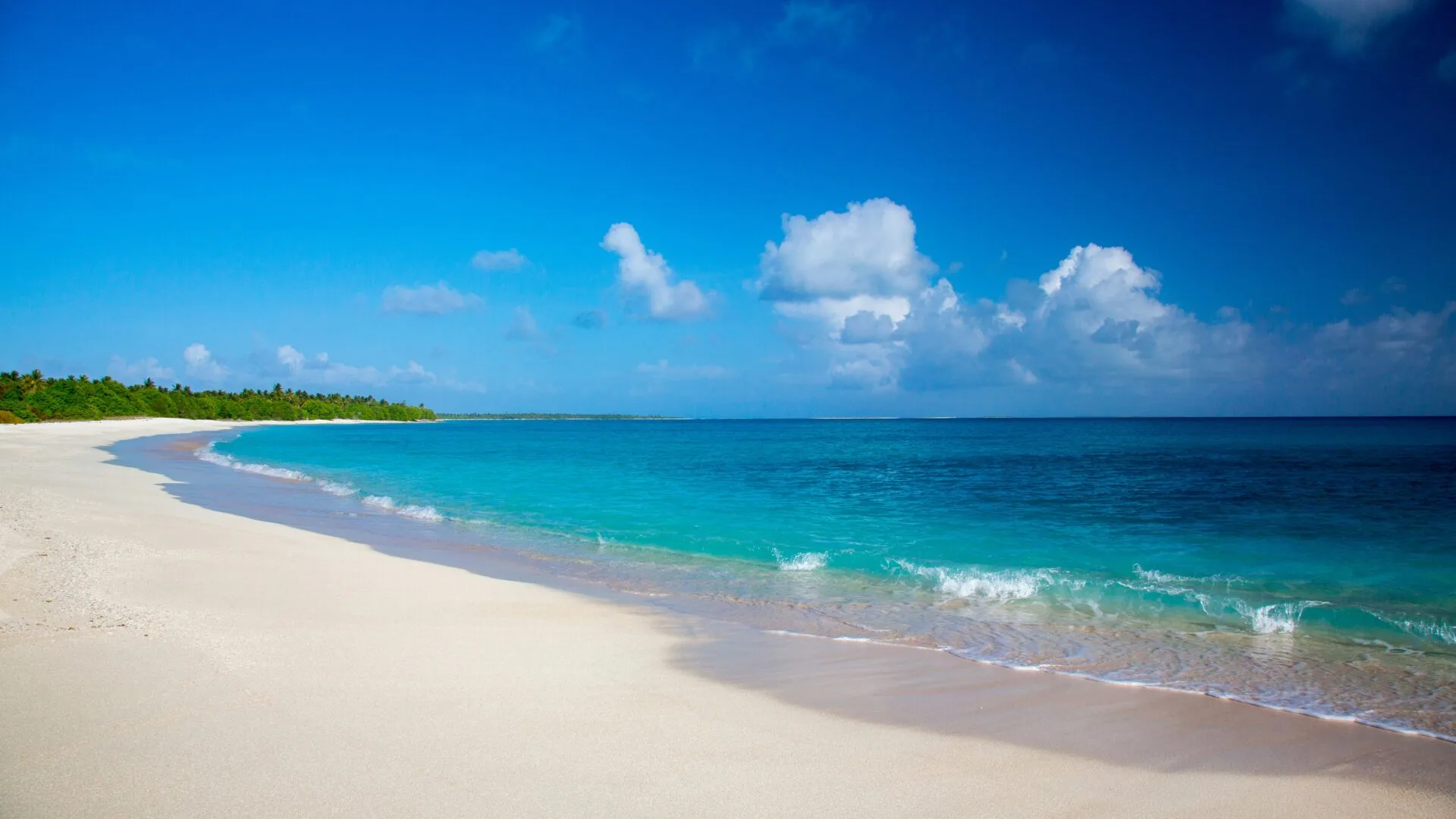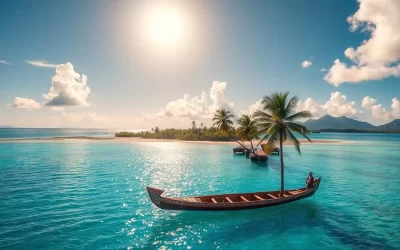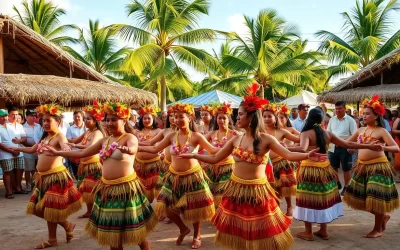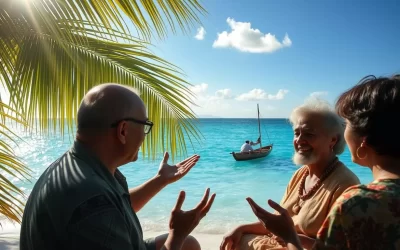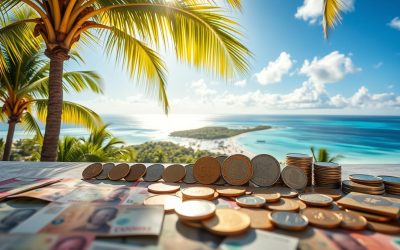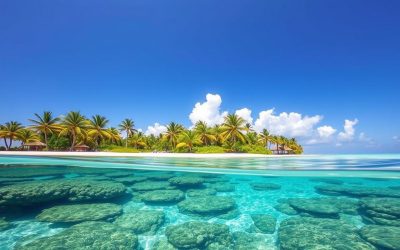✓ Accommodations✓ Flights✓ Rental Cars
Did you know the Marshall Islands is home to the world’s largest shark sanctuary, spanning nearly 2 million square kilometers? This remote Pacific nation, made up of 29 coral atolls and over 1,200 islands, offers travelers a rare glimpse into pristine marine ecosystems and traditional Micronesian culture largely untouched by mass tourism. With fewer than 6,000 visitors annually, the Marshall Islands remains one of the world’s least-visited countries—making it perfect for adventurous travelers seeking authentic experiences off the beaten path.
Getting to the Marshall Islands
The stunning atolls of the Marshall Islands as seen from above
Reaching the Marshall Islands requires some planning, as flight options are limited. United Airlines operates the “Island Hopper” route between Honolulu and Guam, which stops at Majuro International Airport (MAJ). This flight typically operates twice weekly. Alternatively, you can fly to Majuro from Fiji via Nauru Airlines, though these flights are less frequent.
All visitors require a valid passport with at least six months validity beyond your planned departure date. U.S. citizens can enter visa-free for up to 90 days, while citizens of most other countries need to obtain a visa before arrival. Be sure to check the latest entry requirements before planning your trip.
Ready to Experience the Marshall Islands?
Find the best flight deals to this remote Pacific paradise and start your adventure.
Best Time to Visit
The Marshall Islands has a tropical climate with consistently warm temperatures year-round, averaging 26-30°C (79-86°F). The best time to visit is during the dry season from December to April, with January through March offering the most reliable weather. The wet season runs from May to November, with July to October experiencing the heaviest rainfall.
Trade winds pick up in October and November, which can affect boat travel between islands. If you’re planning to explore multiple atolls, scheduling your trip during the dry season will minimize weather-related disruptions. Even during the wet season, rain showers are typically brief, and the islands remain warm and humid.

Spectacular sunset views are common during the dry season
Top Things to Do in the Marshall Islands
1. Explore Majuro Atoll
As the capital and largest population center, Majuro offers the perfect introduction to the Marshall Islands. The atoll consists of 64 islands forming a skinny ribbon of land around a massive lagoon. Downtown Majuro (Delap) has government buildings, shops, and restaurants, while the rest of the atoll offers more traditional island experiences.
Don’t miss Laura Beach on the western tip of Majuro, considered one of the most beautiful beaches in the country. This white-sand paradise with crystal-clear waters is perfect for swimming and snorkeling. The small entry fee ($1) is well worth it for the pristine environment. Visit the Alele Museum to learn about Marshallese history, traditional navigation techniques, and cultural artifacts.
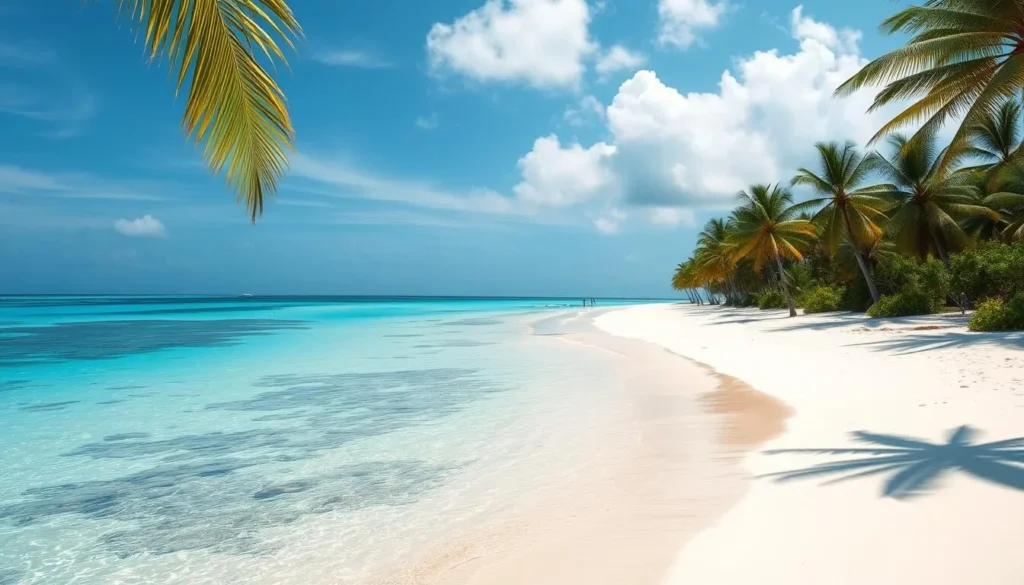
Laura Beach on the western tip of Majuro Atoll
2. Visit Arno Atoll
Just a short boat ride (45-60 minutes) from Majuro, Arno Atoll feels worlds away from the relative bustle of the capital. With its swaying palms, white sand beaches, and turquoise waters, Arno epitomizes the Pacific island paradise. Boats depart from Hotel Robert Reimers on Mondays, Wednesdays, and Fridays at 10:00 am.
The Beachcomber’s Lodge offers simple accommodations for around $50 per night. Remember to bring all supplies you might need, including cash, food, and sunscreen, as options on the island are extremely limited. Spend your days swimming, sunbathing, and walking along the island’s single palm-shaded road.
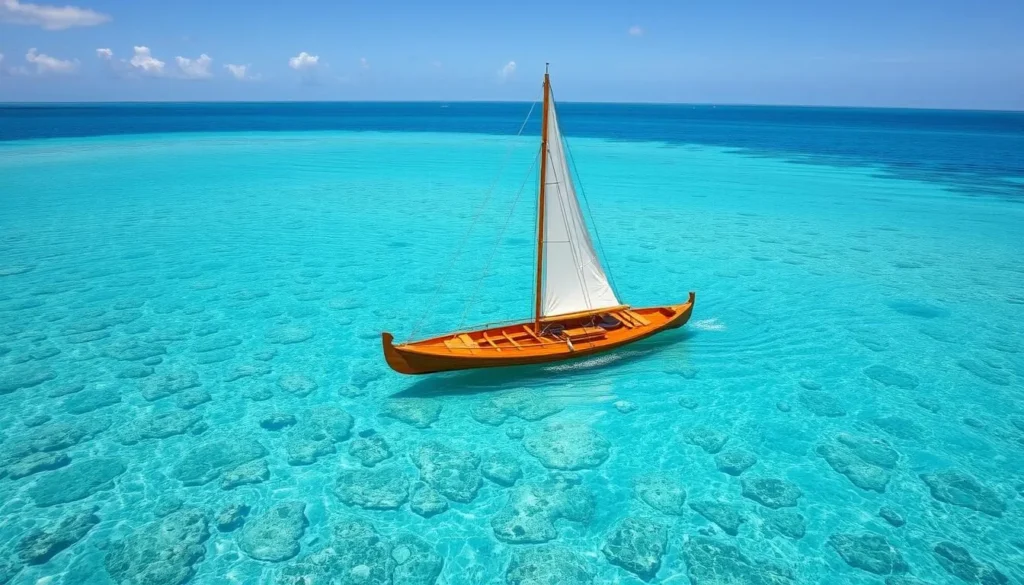
Traditional outrigger canoes are still used for transportation between islands
3. Dive the Wrecks at Bikini Atoll
Bikini Atoll, a UNESCO World Heritage Site, offers some of the most unique diving experiences in the world. Once the site of nuclear testing, the atoll’s lagoon is now home to an underwater museum of shipwrecks, including the USS Saratoga aircraft carrier and the Japanese battleship Nagato.
Due to its remote location and the technical nature of the dives, visiting Bikini requires advance planning and proper certification. Divers must be comfortable with deep dives (up to 50 meters) and wreck penetration. The pristine visibility and historical significance make this a bucket-list destination for serious divers.
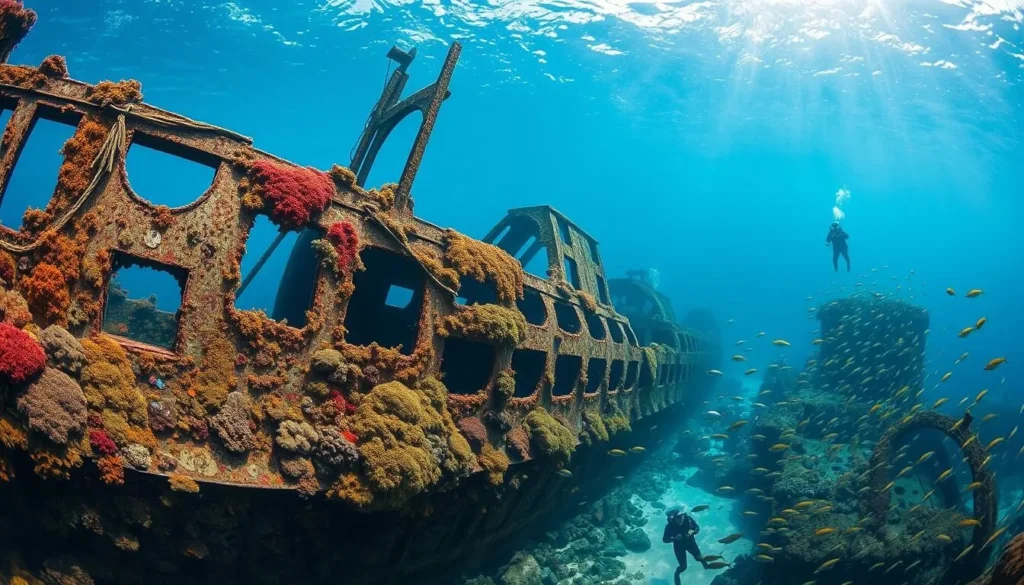
WWII shipwrecks at Bikini Atoll have become artificial reefs teeming with marine life
4. Experience Traditional Marshallese Culture
The Marshallese people have a rich cultural heritage closely tied to the ocean. Traditional skills like navigation by the stars and waves, outrigger canoe building, and weaving are still practiced today. Visit the Waan Aelõñ in Majel (Canoes of the Marshall Islands) center in downtown Majuro to learn about traditional canoe building and possibly arrange a sailing experience.
Marshallese women are renowned for their intricate weaving skills. Look for handcrafted items like pandanus mats, fans, baskets, and jewelry at local markets. The Jaki-ed collective at the University of the South Pacific creates traditional woven clothing and offers demonstrations of their craft.

Traditional weaving techniques have been passed down through generations
5. Kayak in Majuro Lagoon
The calm, protected waters of Majuro Lagoon are perfect for kayaking. Paddle along the shoreline, explore hidden coves, and observe the vibrant marine life through the crystal-clear water. Several guesthouses and hotels offer kayak rentals, and early morning is the best time to enjoy calm conditions and fewer people.
For a unique experience, arrange a guided kayak tour to one of the uninhabited islets within the lagoon. These tiny islands often have pristine beaches and excellent snorkeling opportunities just offshore.
Ready for Adventure?
Book your Marshall Islands activities and experiences now!
Find Activities
Marshallese Cuisine
Marshallese cuisine revolves around seafood, coconut, and locally grown fruits and vegetables. Fresh fish like tuna, marlin, and reef fish are staples, often served raw with lime juice (similar to ceviche) or grilled over coconut husks. Breadfruit, taro, pandanus fruit, and bananas are common accompaniments.
Traditional dishes to try include:
- Bwiro – Fermented breadfruit paste wrapped in banana leaves and cooked in an underground oven
- Pandanus – A fruit with a sweet, complex flavor that’s eaten fresh or made into preserves
- Coconut rice balls – Sticky rice mixed with coconut and sometimes wrapped in leaves
- Jekaro – Fresh coconut water, perfect for hydration in the tropical climate
The best place to find authentic Marshallese food is at the open-air market next to the Marshall Islands Resort in Majuro. Local women sell homemade dishes for around $3 per meal. Restaurants in Majuro tend to serve more international cuisine, though some offer fresh local seafood.

Fresh seafood is a cornerstone of Marshallese cuisine
Where to Stay
Accommodation options in the Marshall Islands are limited, especially outside of Majuro. In the capital, you’ll find a few hotels and guesthouses with varying levels of comfort and amenities.
- Marshall Islands Resort – The most established hotel in Majuro, offering air-conditioned rooms, a restaurant, and a swimming pool. While not luxurious by international standards, it provides comfortable accommodation with lagoon views.
- Hotel Robert Reimers – Located in downtown Majuro, this hotel offers traditional-style bungalows and standard rooms. The hotel has a restaurant and serves as a departure point for boats to Arno Atoll.
- Beachcomber’s Lodge – On Arno Atoll, this simple guesthouse offers basic rooms with kitchenettes for around $50 per night. The beachfront location makes up for the lack of amenities.
- Bikendrik Island Resort – For those with a larger budget, this micro boutique resort on a private island offers an exclusive experience. At around $1,000 per night, it includes boat transfers from Majuro.
On outer islands, accommodation is extremely limited and often requires advance arrangements with local families. If you plan to visit islands beyond Majuro and Arno, you’ll need local connections or assistance from a specialized tour operator.
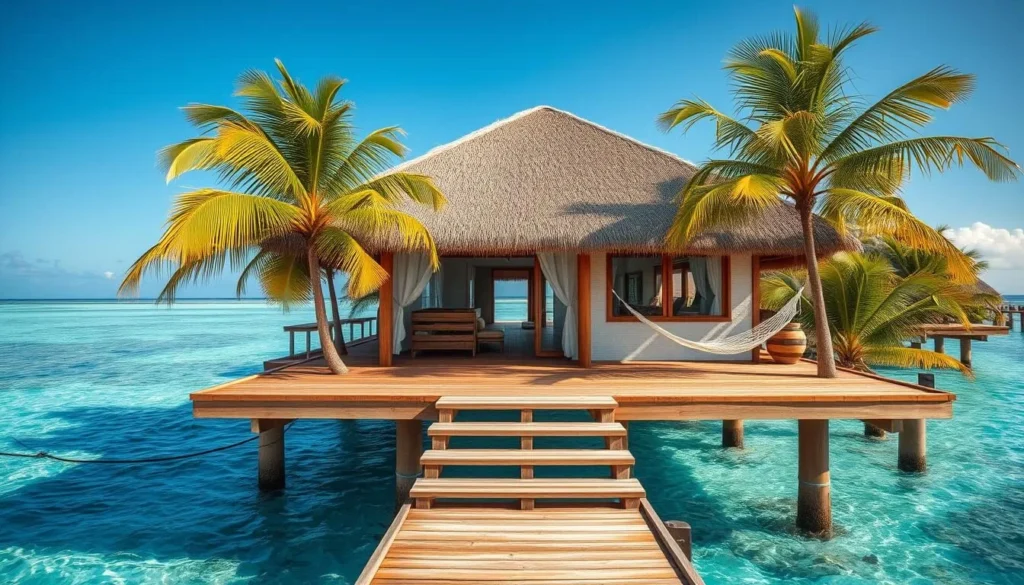
Simple yet charming accommodations offer direct access to pristine waters
Find Your Perfect Stay
Book your Marshall Islands accommodation now for the best rates and availability.
Getting Around the Marshall Islands
Transportation within the Marshall Islands varies depending on whether you’re exploring Majuro or traveling between atolls.
On Majuro
Taxis are the main form of transportation on Majuro. They operate like shared minibuses, picking up multiple passengers along the single main road. A ride within downtown Majuro costs about 50 cents, while traveling to the outer reaches of the atoll (like Laura Beach) costs around $2. Tipping is not expected.
Some guesthouses and hotels offer bicycle rentals, which can be a pleasant way to explore the atoll at your own pace. Walking is also feasible for shorter distances, though the tropical heat can make longer walks challenging.
Between Islands
Air Marshall Islands operates flights to outer atolls, though schedules can be unreliable due to weather and maintenance issues. Flights are often diverted for medical emergencies, so flexibility is essential if you plan to visit outer islands.
Boats are another option for inter-island travel. Regular boat service connects Majuro to Arno Atoll three times weekly. For other destinations, you may need to arrange private boat charters, which can be expensive but offer a more authentic travel experience.
Explore at Your Own Pace
Secure your transportation in the Marshall Islands for a hassle-free experience.
Practical Tips for Visiting the Marshall Islands
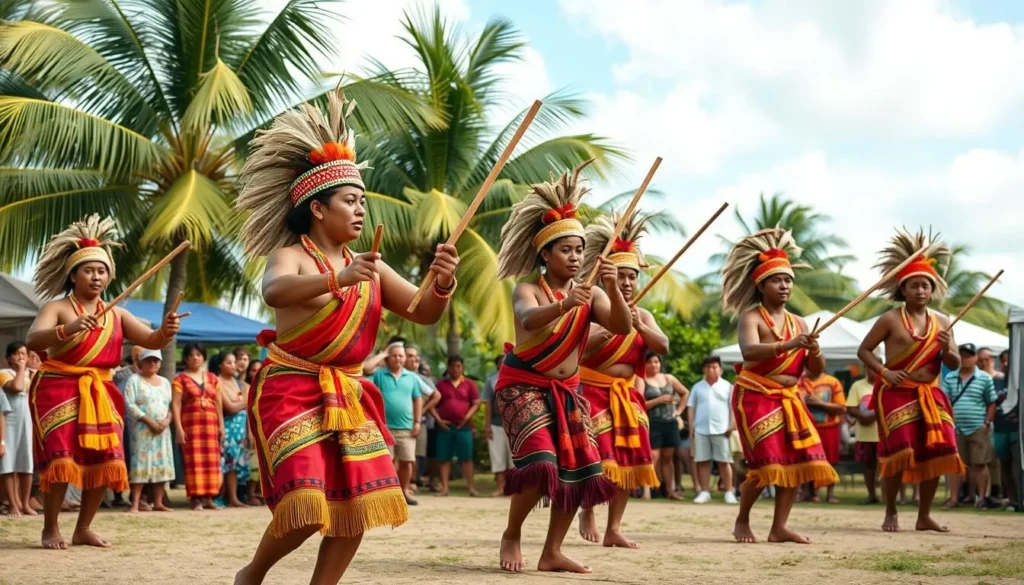
Traditional stick dancing is an important part of Marshallese cultural celebrations
Money and Currency
The US dollar is the official currency of the Marshall Islands. ATMs are available in Majuro but are limited and may not always work reliably. It’s advisable to bring sufficient cash, especially if you plan to visit outer islands where banking facilities are nonexistent.
Connectivity
Internet access is limited and slow throughout the islands, with average speeds around 10 Mbps in Majuro and much slower elsewhere. SIM cards can be purchased from the National Telecommunications Authority in downtown Majuro, but the process can take time. Many accommodations offer Wi-Fi, though connection quality varies.
Cultural Etiquette
Marshallese culture is conservative and respectful. Women should dress modestly, covering shoulders and knees, even while swimming. Men can wear shorts and t-shirts. Remove shoes before entering someone’s home, and always ask permission before taking photos of people.
Health and Safety
The Marshall Islands has limited medical facilities, with the main hospital in Majuro offering basic services. Bring any necessary medications and a well-stocked first aid kit. Use reef-safe sunscreen and stay hydrated in the tropical climate. Crime rates are low, but take standard precautions with valuables.
What language is spoken in the Marshall Islands?
Marshallese is the official language, though English is widely spoken, especially in Majuro and among government officials and those working in tourism. Learning a few Marshallese phrases like “iakwe” (hello/goodbye/love) and “kommol” (thank you) will be appreciated by locals.
Is it safe to drink the water in the Marshall Islands?
It’s recommended to drink bottled or filtered water throughout the Marshall Islands. Rainwater catchment is the primary source of freshwater on many islands, and quality can vary. Most hotels and restaurants serve bottled water.
The Impact of Climate Change
The Marshall Islands is on the frontlines of climate change, with an average elevation of just 2 meters (7 feet) above sea level. Rising sea levels pose an existential threat to these low-lying atolls, with some projections suggesting parts of the country could become uninhabitable within decades.
Visitors can witness the effects of climate change firsthand, particularly in areas like Uliga in Majuro, where flooding has become increasingly common. You’ll see crumbling sea walls, homes with water lapping at their foundations, and even human graves washed into the sea during storm surges.
As a visitor, consider ways to minimize your environmental impact. Use reef-safe sunscreen, avoid single-use plastics, and support local conservation initiatives. The Marshallese people have a deep connection to their land and sea, and responsible tourism can help preserve their way of life for future generations.
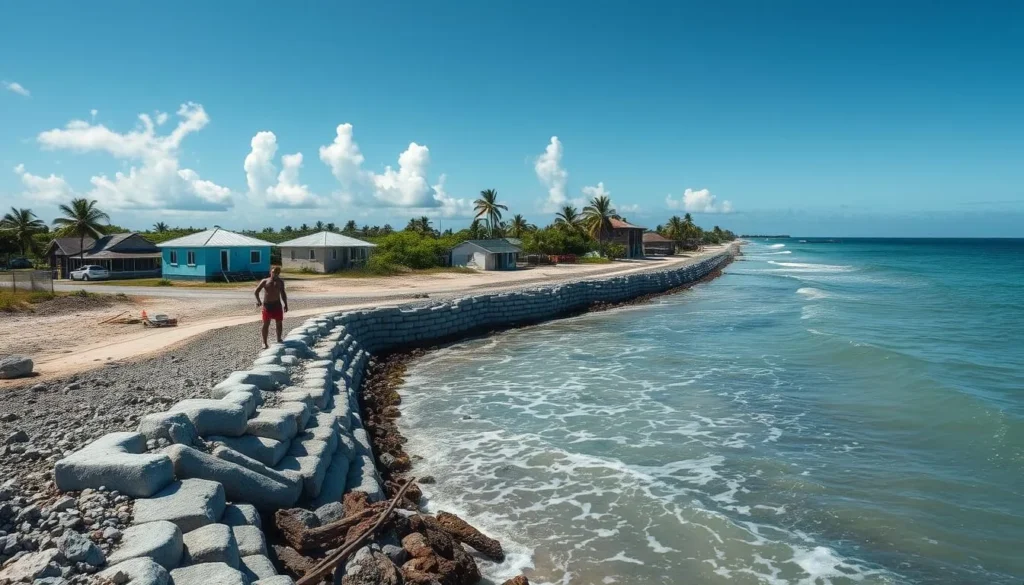
Local communities are working to adapt to rising sea levels
Experience the Marshall Islands Before They Change Forever
The Marshall Islands offers a rare opportunity to experience pristine natural beauty and authentic Micronesian culture largely untouched by mass tourism. From the turquoise lagoons of Arno Atoll to the historic diving sites of Bikini, from traditional navigation techniques to the warm hospitality of the Marshallese people, these islands provide unforgettable experiences for adventurous travelers.
Yet, the clock is ticking. Climate change threatens the very existence of these remarkable islands, making now the time to visit. With proper planning and respect for local customs and environment, your journey to the Marshall Islands can be both rewarding and responsible—a chance to witness a unique corner of our planet before it changes forever.
Start Planning Your Marshall Islands Adventure Today
Don’t miss the opportunity to experience one of the world’s least-visited paradises.
The above is subject to change.
Check back often to TRAVEL.COM for the latest travel tips and deals.
